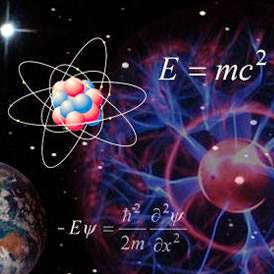 |
| A section of CERN's Super Proton Synchrotron, which could be home to the SHiP experiment by 2026. (Courtesy: Piotr Traczyk) |
This is very interesting. Sterile neutrinos are dark matter candidates. From APS Physics, April 24, 2014:
A hypothetical neutrino that does not interact through the weak force could be the source of a recently detected x-ray emission line coming from galaxy clusters. However, previous models using this so-called “sterile” neutrino as a form of dark matter were not able to satisfy constraints from cosmological observations. Now, writing in Physical Review Letters, Kevork Abazajian of the University of California, Irvine, shows that a sterile neutrino with a mass of 77 kilo-electron-volts (keV) could be a viable dark matter candidate that both explains the new x-ray data and solves some long-standing problems in galaxy structure formation.
A new experiment to search for hypothetical particles known as sterile neutrinos has been given the green light by scientists at the CERN particle-physics laboratory near Geneva. The SFr 200m (£140m) Search for Hidden Particles experiment (SHiP) would be built at CERN and start up a decade from now. The lab's member states will, however, need to approve the project before construction.
Predicted by certain extensions of the Standard Model, sterile neutrinos – if they exist – would interact extremely weakly, if at all, with ordinary matter. However, sterile neutrinos would transform into and out of standard neutrinos, revealing themselves via a greater- or lesser-than-expected rate of oscillation between the different types, or "flavors", of neutrinos. Physicists working on the Liquid Scintillator Neutrino Detector (LSND) at the Los Alamos National Laboratory in New Mexico between 1993 and 1998 saw some evidence for such a transformation, but other experiments have failed to see a similar signal.
There are other plans to look for these hypothetical particles, but these experiments would focus on light sterile neutrinos with masses of less than one electronvolt. SHiP, in contrast, would seek more massive sterile neutrinos known as heavy neutral leptons. Weighing a few gigaelectronvolts, such particles would, very occasionally, decay into ordinary matter. According to SHiP spokesman Andrey Golutvin of CERN, their existence, unlike that of their lighter counterparts, could explain the predominance of matter over antimatter in the universe and the nature of dark matter. "Finding a light sterile neutrino would be a Nobel prize discovery, but it wouldn't solve the problems of the Standard Model," he claims.
Physics World: CERN gives thumbs up to new sterile-neutrino detector
Edwin Cartlidge

No comments:
Post a Comment